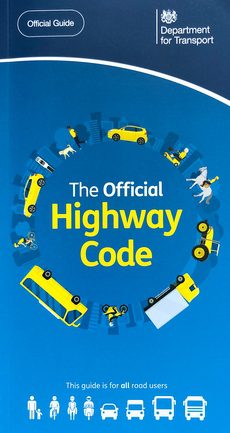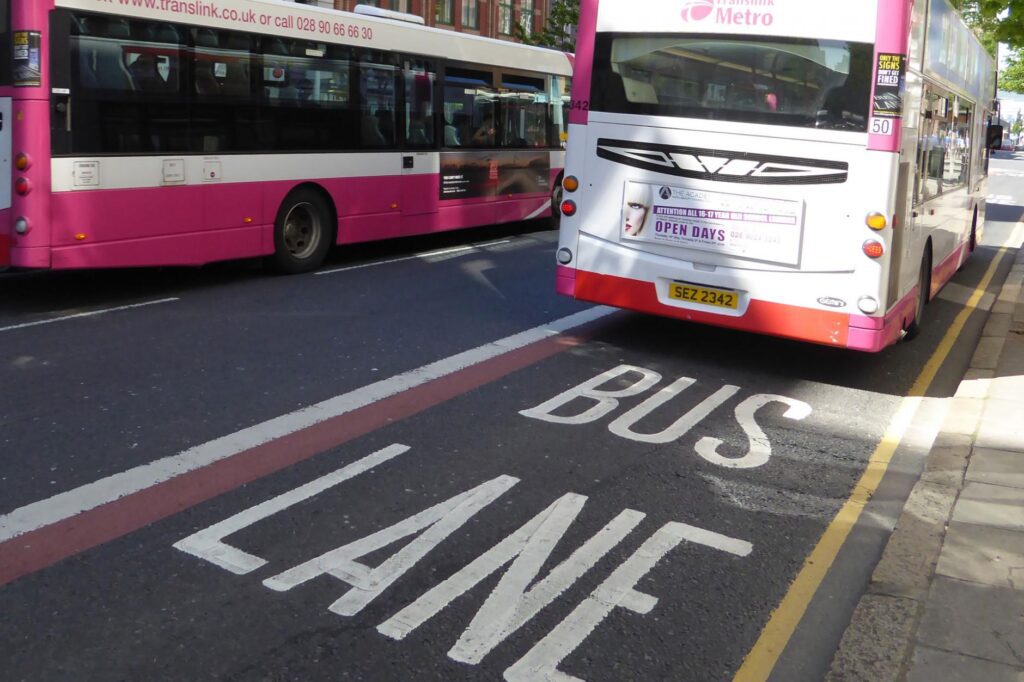
Introduction to the Highway Code
Definition and Purpose of the Highway Code
The Highway Code is a collection of:
- Instructions
- Advice
- Guides
- Mandatory rules for road users in the United Kingdom.
Its primary purpose is to promote road safety and ensure the smooth operation of the road traffic system.
The Code covers various topics essential for driving and riding, such as:
- Speed limits
- Road signs
- Road etiquette
- Legal requirements that must be followed by everyone on the road.
Historical Context and Evolution Over Time
The Highway Code was first introduced in 1931 and has since undergone various revisions to adapt to changing road conditions, advancements in vehicle technology, and developments in road safety practices.
Initially, it was a simple booklet that addressed the basic needs of road safety during a time when motor vehicles were becoming more common.
Over the decades, it has expanded in scope and detail to cater to the complex dynamics of modern traffic and the diverse needs of today’s road users.
Legal Status of the Highway Code
While the Highway Code itself is not a legal document, many of its guidelines are backed by traffic laws, making them enforceable by the police and other authorities.

Failure to comply with the rules set forth in the Code can be used as evidence in any court proceedings to establish liability.
This includes both civil and criminal proceedings, making the Code a critical document for all road users to understand and adhere to.
Key Components of the Highway Code
General Rules and Guidelines for Road Users
The Highway Code provides comprehensive rules and guidelines that apply to all types of road users, including:
- Drivers of motor vehicles
- Motorcyclists
- Cyclists
- Pedestrians
These rules are designed to ensure safety on the road and include guidelines on:
- Speed limits
- The use of seat belts
- Prohibitions on using mobile phones while driving.
The Code also emphasises the importance of understanding and obeying all traffic signs and road markings, which provide essential information about the rules of the road.

Specific Rules for Different Types of Vehicles
In addition to general road safety guidelines, the Highway Code specifies rules particular to different types of vehicles.
For instance, there are additional rules for driving large vehicles like buses and lorries, such as limits on the hours of driving and the requirement for specific types of mirrors.
Similarly, motorcyclists must follow rules about helmet safety and the use of protective clothing.
Each set of vehicle-specific rules is designed to address the unique challenges and safety considerations associated with different modes of transport.
Additional Protocols for Pedestrians, Cyclists, and Horse Riders
The Highway Code also outlines protocols and guidelines for pedestrians, cyclists, and horse riders.
These rules are intended to protect more vulnerable road users and ensure their interactions with motorised traffic are as safe as possible.
For example, the Code provides guidance on:
- Crossing roads safely
- Wearing visible clothing at night
- The right of way in various situations.
For cyclists and horse riders, there are additional rules about using shared paths, helmet use, and the importance of using lights and reflective clothing in poor visibility conditions.
This comprehensive framework within the Highway Code ensures that every road user is equipped with the knowledge to navigate the roads safely and responsibly, making it an essential element of road safety education for all learner drivers in the UK.
Importance of the Highway Code for Safe Driving
Enhancing Road Safety and Reducing Accidents
The Highway Code plays a crucial role in enhancing road safety and reducing accidents. By setting out clear rules and guidelines, it helps to create a predictable environment where all road users know what to expect from each other, reducing the likelihood of confusion and collisions.

The rules of the Code are underpinned by extensive research and best practices that aim to mitigate the most common risks encountered on roads, such as:
- Speeding
- Failing to yield
- Improper lane usage.
Promoting Courtesy and Consideration Among Road Users
Another significant aspect of the Highway Code is its emphasis on courtesy and consideration among all road users.
It encourages behaviours that might not be legally enforceable but are essential for maintaining harmony on the road.
This includes advising drivers to be patient with learner drivers and to give way to pedestrians at crossings.
Promoting such respectful and considerate behaviour not only enhances road safety but also contributes to a more pleasant driving environment.
Role in Driving Tests and Driver Education
The Highway Code is integral to driving tests and driver education in the UK.
Knowledge of the Code is tested both in the theory and practical driving tests, ensuring that all new drivers have a sound understanding of road signs, laws, and safety guidelines before they are allowed to drive independently.
This educational role underscores the importance of the Highway Code as a foundation for safe driving practices across the nation.
How to Use the Highway Code
Studying the Highway Code as a Learner Driver
For learner drivers, studying the Highway Code is the first step towards understanding the rules of the road and preparing for the driving theory test.
It is essential that learners thoroughly familiarise themselves with the Code, as it not only helps them pass their tests but also teaches them how to react in various driving situations, thereby enhancing their safety and that of others on the road.
Many resources, including apps, books, and online tools, are available to help learners study the Code effectively.

Practical Applications of the Code in Everyday Driving
The practical applications of the Highway Code in everyday driving are vast. It helps drivers make informed decisions, such as knowing when to yield right of way, how to approach roundabouts, and the correct procedures for overtaking other vehicles.
Regularly referring to the Highway Code can help drivers handle unusual or difficult driving situations more competently, thus maintaining safety and efficiency on the road.
Keeping Updated with Changes and Amendments
Staying informed about changes and amendments to the Highway Code is crucial for all drivers, not just learners.
The Code is regularly updated to reflect new laws, changes in driving technology, and evolving road conditions.
Keep up to date with the latest Highway Code changes
Keeping up to date ensures that drivers are not only compliant with the latest traffic laws but are also practising the safest and most effective driving habits.
Information about updates to the Highway Code can be found on the official government website, through driving schools, and in the news media.
Regularly reviewing these changes helps maintain a driver’s knowledge and adaptability, ensuring ongoing road safety and legality in their driving practices.
Common Misunderstandings and Clarifications
Misinterpreted Rules in the Highway Code
One of the challenges with the Highway Code is that certain rules can be misinterpreted by road users, leading to confusion and unsafe practices.
For instance, the rules around right of way at roundabouts and the correct use of signals are often misunderstood.
Some drivers might incorrectly assume that the vehicle inside the roundabout always has the right of way, which is not always the case and can vary based on signage and road markings. Such misunderstandings can lead to accidents and road rage incidents.
Clarifying Ambiguous Regulations
Ambiguity in the Highway Code can lead to inconsistencies in how rules are followed. A common area of confusion arises with the use of bus lanes; some drivers are unclear about when these lanes can be used by other vehicles.

Image source: NIDirect
It’s crucial for drivers to refer to the latest version of the Highway Code for precise information on current regulations and to seek clarification from reliable sources if unsure about specific rules.
Tips for Correct Application of the Rules
To ensure the correct application of the rules of the Highway Code, drivers are encouraged to:
- Read and review the Highway Code regularly to keep updated with any changes.
- Attend refresher courses or workshops that focus on road safety and the practical application of the Highway Code.
- Use mnemonic devices to remember specific rules, especially those that involve multiple steps or options.
- Practice defensive driving techniques that emphasise safety and consideration for all road users.
Additional Resources and Learning Tools
Official Publications and Updates
The official publications of the Highway Code are the primary resource for any driver or road user. These publications are available in multiple formats including print and digital versions.

The Department for Transport regularly updates these resources to reflect the latest changes in road legislation and safety guidelines.

Keeping a recent copy of the Highway Code in your vehicle or digital device is advised for quick reference.
Interactive Tools and Online Resources
Numerous interactive tools and online resources have been developed to help individuals learn and understand the Highway Code more effectively.
These include mobile apps (iOS, Android) interactive websites, and online quizzes that are designed to make learning engaging and comprehensive.
Such tools are particularly useful for learner drivers preparing for their theory tests, as they provide practical scenarios and instant feedback.
Incorporating the Highway Code into Driver Training Programs
Driver training programs often incorporate the Highway Code into their curriculum to ensure learners understand the importance of each rule and its application in real-world scenarios.
Driving instructors play a crucial role in interpreting the Code and teaching their students how to apply these rules while driving.
Enhanced training programs might also use simulators and role-playing scenarios to deepen learners’ understanding and application of the Highway Code, making them safer and more confident drivers.
Frequently asked questions
The Highway Code is a set of instructions, guidelines, and mandatory rules that govern road usage in the UK.
It is designed to help all road users, including drivers, motorcyclists, cyclists, pedestrians, and horse riders, to use the roads safely and effectively.
Every road user in the UK must follow the Highway Code. This includes motorists, motorcyclists, cyclists, pedestrians, and horse riders.
While the Highway Code itself is not a law, many of its rules are legal requirements, and failure to comply with these can lead to fines, points on your driving licence, or other enforcement actions.
Other rules are advisory and not following them cannot lead to legal action in itself but can be used in court to establish liability.
The Highway Code is updated periodically to reflect changes in laws, road safety standards, and driving practices. Significant updates are publicised by the Department for Transport.
Copies of the Highway Code can be purchased online, at bookstores, and at some post offices. It is also available digitally on the UK government’s official website.
Learning the Highway Code is essential for passing the driving theory test and becoming a safe and responsible driver. It helps ensure that you are aware of the latest road safety regulations and driving laws.
Yes, foreign drivers in the UK are also required to follow the Highway Code. It is important for drivers from other countries to familiarise themselves with the Code, as road laws and driving practices can vary significantly from those in other countries.
Yes, the Highway Code is an essential resource for preparing for the UK driving theory test. It provides the foundational knowledge needed for the test, covering road signs, rules of the road, and safe driving practices.
Not following the rules in the Highway Code can lead to traffic offences, which may result in:
- Fines
- Points on your licence
- Disqualification from driving.
In more severe cases, it can contribute to road accidents and injuries.
To stay updated with changes to the Highway Code, you can check the latest edition on the UK government’s website or subscribe to updates from the Department for Transport.
Regularly revisiting the Code and related resources is also recommended for all drivers to ensure they are aware of the current rules and practices.


